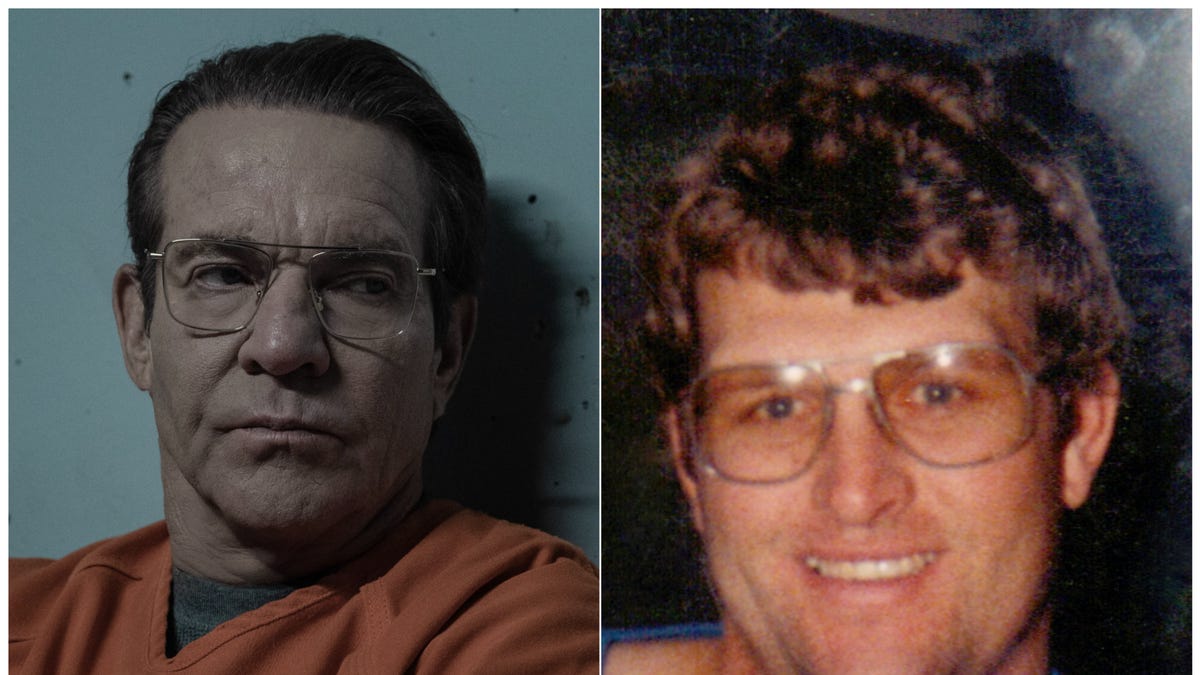Ted Bundy, Jack the Ripper and DNA: New tech solving murders
From Ted Bundy to Jack the Ripper, new DNA technology is solving murder mysteries, finding serial killers, and exonerating innocents.
Just the FAQs, USA TODAY
The horrors surrounding “Happy Face” are bone-chillingly true.
The Paramount+ crime drama series delves into the seemingly all-American upbringing of Melissa G. Moore, which is terrifyingly upended when she discovers that her truck driver father, Keith Hunter Jesperson, is the serial murderer known as the Happy Face Killer. Jesperson is spending his life sentence in an Oregon prison for the murders of eight women from 1990 to 1995, and might have committed even more.
But much of the eight-episode series, starring Annaleigh Ashford as Melissa, is heavily dramatized. “Happy Face” is “inspired by a true story,” according to an opening disclaimer, and indulges in significant license.
“It’s a true-crime story based on true events,” says Dennis Quaid, who plays the wire-rimmed glasses-wearing Jesperson. “Melissa had to reconcile the loving relationship she had with her father as a child with the monster her father was in reality. That’s where our story comes from.”
Here’s what’s drama and what’s true in “Happy Face,” (first two episodes now streaming, then weekly on Thursdays), as told by the real Melissa, an executive producer on the series, author, true-crime journalist and victim’s advocate who lives in Portland, Oregon, with her husband Steve.
The ‘Dr. Greg’ talk show premise: Those dogs don’t hunt
The series portrays Melissa as an unassuming makeup artist on the “Dr. Greg Show” where she’s convinced to get her imprisoned father to reveal new murder victims, preferably on camera. Moore first told her story on TV for the “Dr. Phil” show in 2008 and has appeared as a crime correspondent for “The Dr. Oz Show.” She even had an early stint at cosmetology school. But the “Dr. Greg Show” aspect is pure fiction.
Moore’s story garnered attention with her 2018 true-crime podcast “Happy Face.” But she first told it in her 2009 book “Shattered Silence: The Untold Story of a Serial Killer’s Daughter.”
“That was my chance to have a reckoning with my own story and tell it,” Moore tells USA TODAY.
Many childhood moments really happened, even the spaghetti sauce sighting
Many of the scenes from Melissa’s childhood reflect the innocence of growing up as one of three children of Jesperson and their mother, Rose Hucke (the couple divorced in 1990). There are happy moments with her father (he called her Missy). But many memories have turned sinister in retrospect. A scene where hidden duct tape rolls out of from under her father’s truck cab bed happened, she says: “It was an industrial-sized roll.” Also true: The scene in which a teenage Melissa visits her recently divorced father in Portland, Oregon, and notices a red substance on the ceiling fan. He chalks it up to spaghetti sauce, but the 1990 trip was right after Jesperson’s first known murder. “I had no idea that I was in a crime scene,” says Moore. “I’m speculating that was blood.”
‘Happy Face’ father-daughter prison visits are amped
The tense prison visits between Moore and her father are heavily exaggerated for drama. Melissa says she’s seen her dad in prison twice, first when he was charged with killing his then-girlfriend Julie Winningham in 1995. “He said, ‘Missy, my best advice is to change your last name.’ That’s when I knew he was guilty,” says Moore, who followed it. “We would learn that next summer that he committed seven more murders.”
Moore says her only 2005 prison visit, accompanied by her then-husband, prompted Jesperson, now 69, to immediately ask his daughter if she wanted a motive.
“Do you want to know why?” Moore recalls him saying, but she declined to hear his explanation. “So then he started talking to my husband about mortgages. It was bizarre.”
“I still want to know why,” she says. “But I thought he would just play games.”
The Happy Face name came from notes from the killer
Quaid incorporates a leering smile as Jesperson, especially when speaking to his daughter in scenes shot in a defunct prison. However, the Happy Face Killer nickname came from taunting notes Jesperson left authorities, which featured a pre-emoji written smiling face, as depicted in the series.
“He’d even leave messages on bathroom walls with the happy face. That was kind of his I.D.,” says Quaid. “He’s not smart but thinks he’s this master manipulator.”
When researching the role, the 6-foot-tall Quaid never sought to meet the 6-foot-6-inch Jesperson in prison. “I have and had no interest in meeting him,” says Quaid. “I think I’d just get a bunch of b.s. anyways.”
Melissa’s children were curious about their unknown grandfather
“Happy Face” shows Melissa making a call on a burner phone to her father in prison, ordering him to stop writing letters to her children. This verbal confrontation didn’t happen, but the discomfort of her children finding about their granddad was real. Moore says her kids naturally started asking about their never-spoken-of grandfather when they were teenagers. Jesperson wrote about the kids in letters to her, and some sent to her husband.
Her father “really wants to have this family reunion. That’ll never happen,” says Moore.
Some of Jesperson’s letters were reflected in the series’ conversations between the father and daughter, including their first prison visit, where he says, “Missy, you gonna come over here and do my makeup? Make me look pretty for the camera?”
“My dad had written that to me, saying that if I ever came to visit, to let him know,” says Moore. “Because he wanted to look really good, camera-ready.’”

Leave a Reply